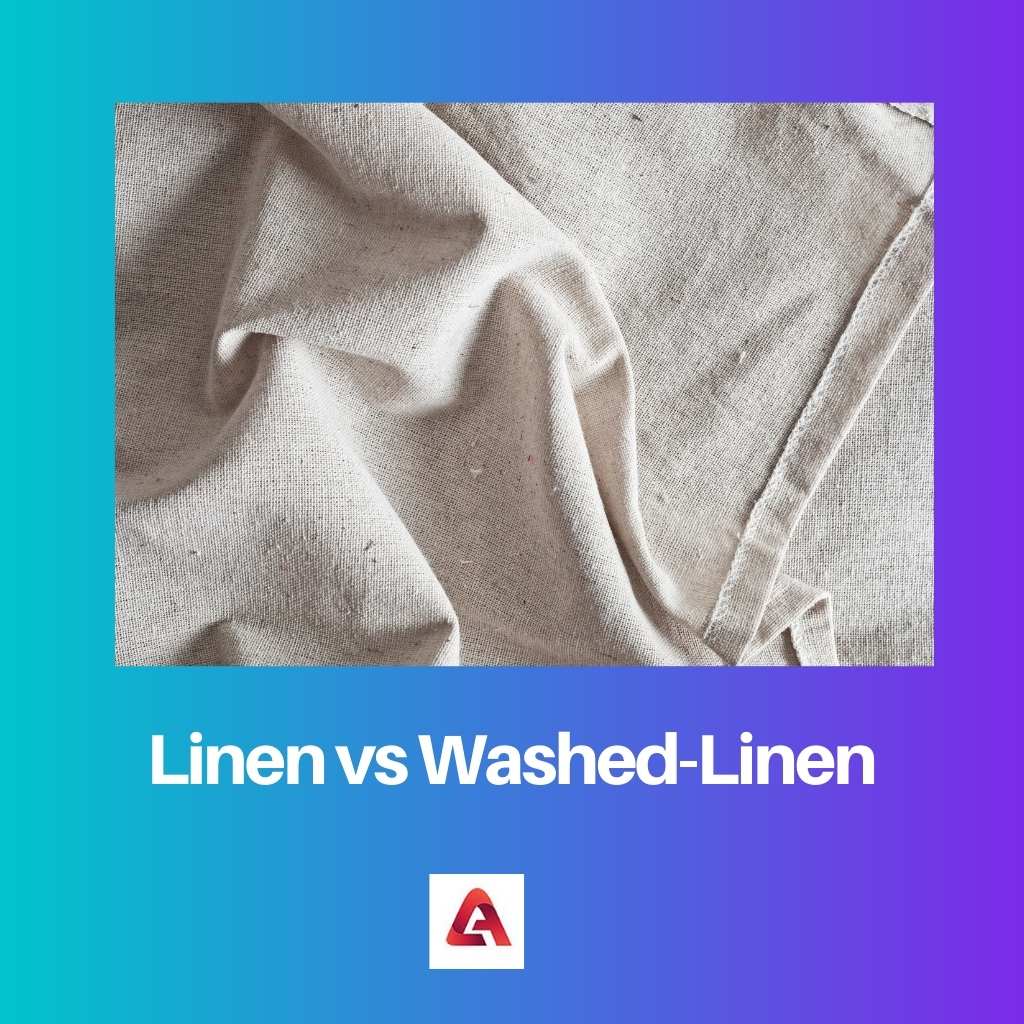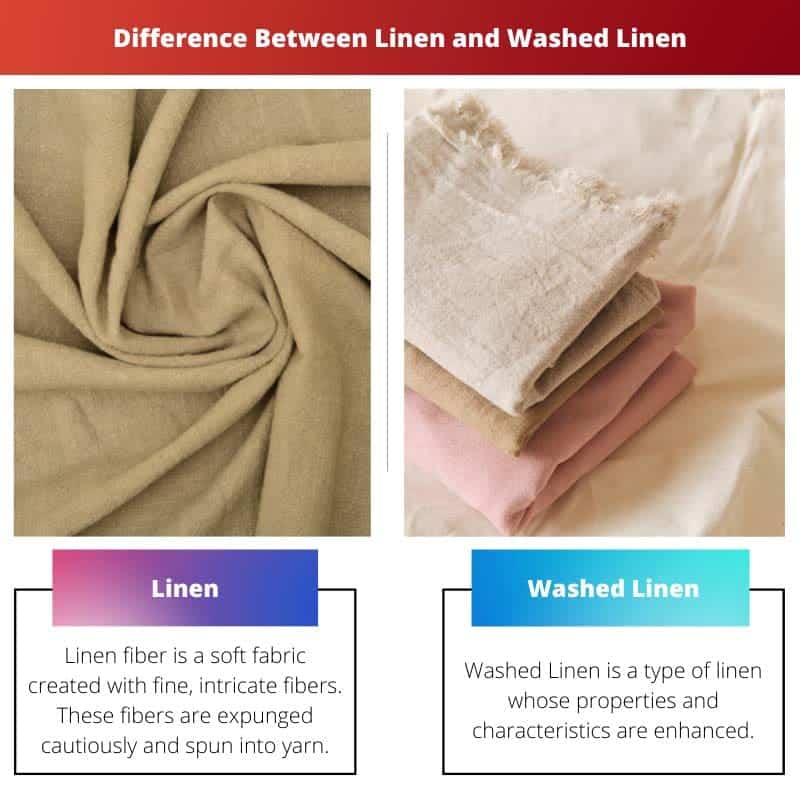There are many fabrics in the market for various needs. A few fabrics are perfect for apparel, while others are perfect as bedding.
There are various classifications of Linen fabric in the market. Linen and Washed Linen are great fabrics for warmer months. They are perfect for textiles and industrial purposes.
Key Takeaways
- Linen is a natural fabric made from flax fibers, while washed linen refers to linen fabric that has undergone a washing process to create a softer texture.
- Both linen and washed linen are breathable, durable, and absorbent, making them suitable for clothing, bedding, and home textiles.
- Washed linen has a more relaxed, casual appearance than regular linen due to the softening process, which reduces shrinkage.
Linen vs Washed-Linen
Linen is a term used to describe a type of fabric that is made from the fibers of the flax plant. It is known for its strength, durability, and natural luster. Washed linen is a type of linen fabric that has been pre-washed to achieve a softer, more relaxed texture and a slightly faded look.

Linen is a popular fabric derived from the flax plant. It is durable, absorbent, and vigorous.
It is used in stitching and making sheets, bedding, and pillow covers because of its softer texture, moisture-absorbing qualities, and durability. Linen is better than cotton and perfect for people who sweat a lot.
Washed Linen is a type of linen fabric washed and cleansed with traditional or chemical processes. Traditional processes are natural and authentic and maintain the durability and structure of the fabric.
Whereas, some washed linen is due to softening using constant vigorous motions by stones or softeners or processed with chemicals.
Comparison Table
| Parameters of Comparison | Linen | Washed-Linen |
|---|---|---|
| Type of Fibre | It is a natural fiber. | It is a combination of natural fibers with synthetic and chemical processes. |
| Biodegradability | It is biodegradable and has no negative impacts on the environment. | Linen loses its biodegradable characteristics once it is processed, or dyed. |
| Shrinkage | It is highly likely to shrink after washing. | It does not shrink after washing and sustains for a long time. |
| Water Use | It is less water-intensive as less water is used in the production of linen. | It is highly water-intensive as water is utilized in the process to make it soft. |
| Wrinkling | It wrinkles very easily. | It does not wrinkle and has a smooth, shiny finish. |
What is Linen?
Linen fiber is a soft fabric created with fine, intricate fibers. These fibers are expunged cautiously and spun into yarn. They are woven into desirable pieces of clothes.
The structure of linen assures the best conduction of heat and is perfect for keeping people cozy and warm.
It does not develop any itchiness. It is an ideal fabric for warm weather. Linen is a popular choice for textiles like suits, dresses, tablecloths, bags, luggage, and wallpapers.
It can easily retain moisture for a long time.
Manufacturing linen is tedious work. It is a resource-intensive, laborious, and time-consuming fabric. The production time of linen popularised cotton gin as an alternative.
Due to distinct characteristics, Linen still manages to be produced globally.
Linen is a versatile and long-lasting fiber. It ensures zero wastage during the production process. It has a lower water footprint and is natural on the skin. It allows the airflow through the garment conveniently.
Linen has the natural tendency to dismiss insects. Insects like moths are attracted to clothing and leave bite marks on clothing.
Linen is perfect as it not only repels insects but also adds a luxurious feel to the clothes. The fiber is great for daily wear.

What is Washed-Linen?
Washed Linen is a type of linen whose properties and characteristics are enhanced. It is softer and more manageable than regular linen.
The garment is pre-washed before the final product to guarantee that it does not require consistent wash cycles to sit up.
Flax planet is refined to create feasible choices for the people. Washed Linen has undergone extensive washing cycles with the addition of chemical softeners.
Washed Linen is a supple, delicate fabric. There are two types of Linen washing processes.
Stone-washed linen refers to a linen pre-washed before usage. It is called stone-washed linen as it uses stones like volcanic rock and pumice stone.
These stones are ideal for providing a softer feel and a new manufactured cloth appearance. The linen is washed with a combination of human-made and organic hard-stones to gain a worn-out appearance.
Washed Linen is also developed from Enzyme Eco washes. Enzyme Eco Linen fabric is washed with enzymes and is environmentally friendly. It has all the properties of Linen without its environmental impacts.
It is not chemically treated. It has a slub finish and is available in vibrant shades. It is efficient in handling and has a great weight to it. It is a perfect fabric to enjoy the benefits of Linen.
Main Differences Between Linen and Washed Linen
- Linen is less comfortable than washed linen. Washed Linen uses modern technology which enhances its ability to provide more comfort and convenience to people.
- Linen garments cannot sustain their colors as long as washed linen garments. Washed linen retains the colors better and avoids any fading.
- Linen fiber is manufactured with the help of the cellulose fibers present inside the flax plant. On the other hand, washed linen is manufactured with enzymes, softeners, and stones.
- Linen can last decades when kept with proper care, washed, and stored properly. On the other hand, Washed Linen is a pre-washed garment that can sustain longer than regular Lenin as it is highly durable.
- Linen is a primary manufactured product. It is a finished product. Whereas Washed linen is the after product of Linen produced by further processing of the already available garment.

